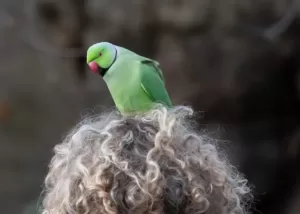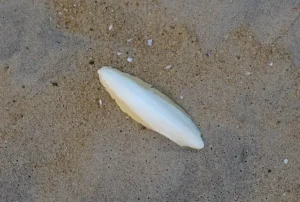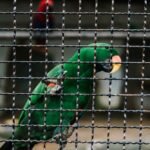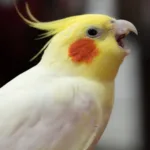A hands-free approach to handling your parrot is not enjoyed by most owners. It is kind of awkward and confusing when your parrot sits on your head, especially when you haven’t taught them to do so.
In fact, this problem is most common in parrots that haven’t yet been trained to step up. When your parrot does not know how to perch on your hand, it will instinctively choose your head or shoulder as it gives it a higher vantage point.
However, there can be several other reasons why your parrot may choose to sit on your head. A parrot could be coming up to your head to groom you. Other times, it can also mean that they are seeking your attention.
Quick Navigation
What Does It Mean When A Parrot Sits On Your Head?
There can be a few different reasons why your parrot may prefer to sit on your head. Let’s understand what each of them means and how you should address this issue:
They Haven’t Been Trained To Step Up
Your head and shoulders are the most obvious place for your parrot to go if they do not know how to step up. Your head is a safe place for your parrot as it gives it more control over the situation.
When your parrot is sitting on your head, it is in a secure position. If you try to pick it up from your head it can simply refuse by biting or nipping at your hand.
This is why it is so important to teach your parrot to step up early on. If your parrot gets used to landing on your head, it can be a difficult task to train them out of it.
However, it is never too late to start training your parrot. If you believe this to be the reason why a parrot might be sitting on your head, try step-up training.
They Prefer A Good Vantage Point
Most parrots prefer to perch and hang out at places that are higher up. It allows them to get a good view of their surroundings and always be in a better position to defend themselves. A higher perch helps them spot dangers and act quicker.
As prey animals, this is strictly an instinctual behavior for your parrot. So if your parrot prefers to sit on your head, it could mean that it does not trust you enough yet. By being on your head it avoids contact with you.
To help your parrot get off your head, you first need to build trust with it. This again brings us to try and spend time training your parrot. Not only does it help you train your parrot but also deepens your bond.
They Want To Preen You
If your parrot sits on your head, it can also be a sign of affection. One of the ways parrots show affection is by preening their flockmates. While on your head if your parrot is playing with your hair, it could mean that it is preening you. It may use its beak to arrange your hair just like it grooms its own feathers.
You may feel like it’s nibbling a little, but it should be fine as long as it does not pull on your hair. It is common for parrots to preen their owners. So if it does not bother you much, you should allow your parrot to show their love to you.
They Want Your Attention
Parrots do a lot of things to get our attention. If they’re in their cages, they’ll probably scream to let us know they want our attention. But sometimes they may fly toward you when they’re out of their cages.
It makes it impossible for us to ignore them. So if your parrot is just bored to the point where it cannot get you to play with them by any other means, it will have your attention this way.
They’re Exploring
Sometimes, when a parrot unexpectedly lands on you, it might simply be due to its inquisitive nature. A parrot may perch on your head because it finds your hair texture and warmth appealing. It might also do it to get a better view of their surroundings from up high.
The Height Dominance Myth
Many people believe that when a parrot is seeking a higher position to perch it is showing a form of dominance. Most of the time, it is the owner’s head or shoulder that the parrot chooses to perch on. However, that does not necessarily mean that they are asserting dominance over their owners.
This is an old idea that suggests that parrots have a hierarchy in the wild and the dominant parrots perch on higher branches. Similarly, in a captive setting parrots look for higher locations to show their dominance.
However, ornithologists have studied the behaviors of parrots in the wild and found no evidence of a hierarchical order. In fact, by nature, parrots are not dominant animals. They are flock creatures that like to live in harmony.
According to Steve Martin President, Natural Encounters parrots do not have dominance hierarchies in the wild. There is no evidence that suggests that Height Dominance exists in parrots.
People often confuse their parrot’s anger and frustration for dominance, but it is actually just a temporary emotional expression. Parrots do not assert dominance over the humans who take care of them. They may get angry at times, but they treat their owners like their flockmates.
Should I Let My Parrot Sit On My Head?
People often say that it is a matter of preference to let or not let your parrot sit on your head. And while that may be true, you also need to consider this as a problem as it can be a socially undesirable behavior.
Also, if you have a small parrot like a lovebird or a quaker, its small feet should not bother you, but if your macaw starts jumping on your head out of the blue, those talons can feel quite unpleasant.
Most people don’t enjoy their parrots landing on their heads due to their tendency to misbehave. Sometimes, the parrot may nibble on the head or even pull at your hair. In some cases, the parrot may even poop on you.
And since parrots poop so often, there is a high chance for that to happen. So it is not the most desirable thing for your parrot to do and should be addressed.
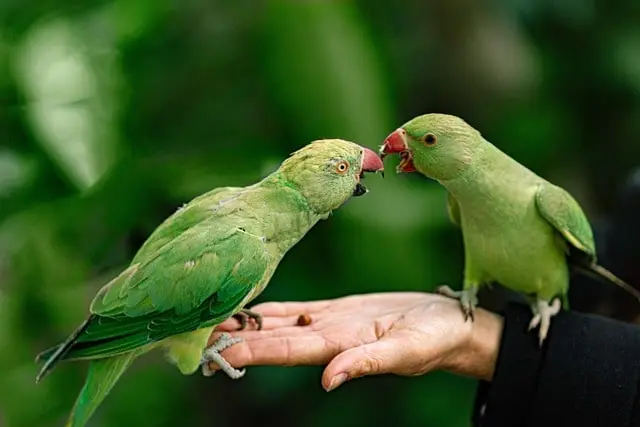
How Do I Stop My Parrot From Sitting On My Head?
For some people, this behavior is not such a big issue. However, if you really feel bothered by it, you can take steps to train your parrot to stop sitting on your head.
Train Them To Step Up
If your parrot has not been properly trained to step up, it can be helpful to teach them in order to avoid this problem.
You can use luring where you hold out your two fingers in front of your parrot and encourage them with treats to come to you.
Your parrot may not know what you’re trying to do from the get-go, but with practice, it’ll come around. One pro tip is to keep your fingers higher up than their perch level. This is because parrots are much more open to stepping up than stepping down.
Once your parrot is trained to perch on your hand, it is much more likely to fly towards you and land on your fingers rather than your head.
Train Them To Step Down
In some cases, parrots may develop this behavior without any explanation. In such situations, you need to carefully bring them down using your fingers.
Every time you are able to get your parrot to obey you, you give them a treat. You can use target training for this
Let’s understand how you can teach them to step down using target training. Firstly, hold out a stick at a distance from your parrots to lure them towards it.
While you have the stick held outward, put out your two fingers in front of your parrot to help it get to the stick.
Once you are able to get it onto your fingers, reward it with its favorite treat. This makes the parrot understand that it will get the treat only when it steps down from your head.
For some people this can work in a few tries, however, in other cases, it may take a bit longer.
